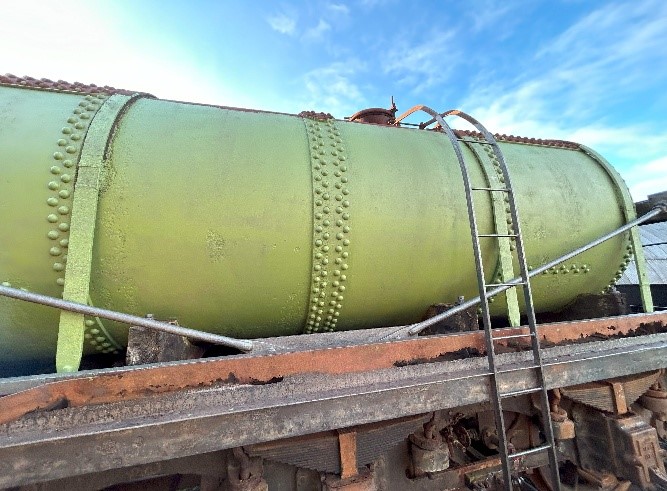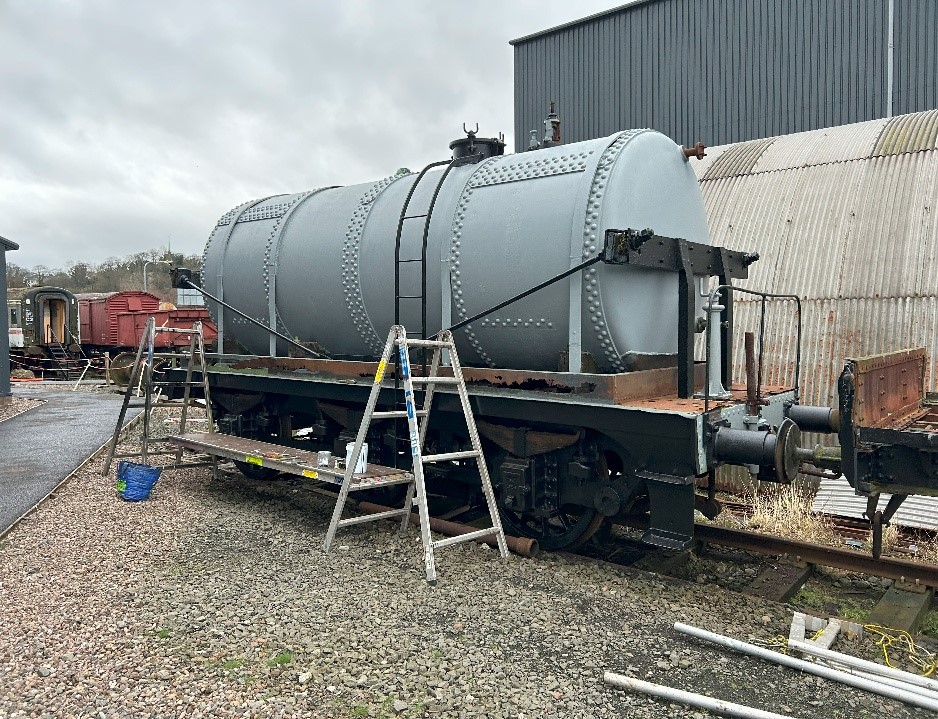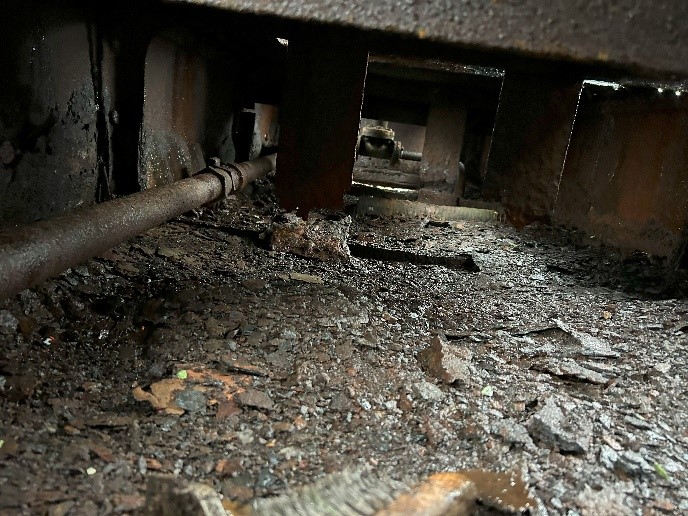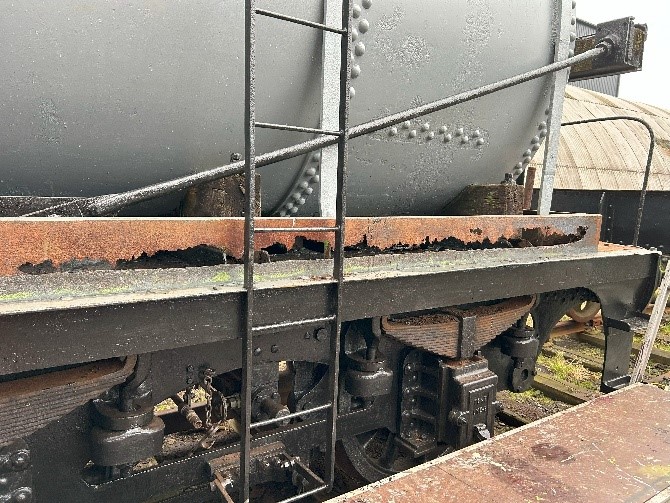
Background
The particular interest in this wagon derives from the fact that the chassis is from the tender of LNER Class
C11 loco 9879 Abbotsford, one of the celebrated NBR Atlantic locomotives which were withdrawn in the late 1930s. At that time many
of the tenders from these locomotives were sent south by the LNER for use as “sludge tenders” to store the white precipitate from
boiler water treatment. Later, when the LNER introduced early diesel shunters to March Depot in 1944, one tender was cut down to
the chassis and fitted with the 4000 gallon barrel from an old tank wagon to store diesel fuel, numbered as service vehicle 961880,
later TDE 961880, and finally internal user 041957.
After many years out of use, it came to the attention of the (then) Railway Heritage Trust which formally ‘designated’ it as a redundant
railway artefact of historical interest and, in view of its Scottish connection, offered it to the Society.
Work Undertaken
Based on a photograph of this wagon taken in 1988, and the more recent image shown below, this wagon has been in need of significant
attention for some time.

041957 in November 2024 – largely the condition it had been in for the last forty plus years
From December 2024 to February 2025, work was undertaken to improve the overall condition of this wagon on a section of isolated track adjacent to the picnic area near the Museum entrance. The location of this vehicle in relation to visitor access made restoration a priority.
Tank Barrel
As can be seen from the above photo the tank barrel was completely rusted, however the general condition of the surface was good and scraping
the surface and a thorough wire brushing provided a surprisingly good surface on which to apply metal primer, undercoat and weatherproof
topcoat. There is very little documentation of the livery of the wagon when in service thus a mid-grey was selected to provide some contrast
to the black underframe.

The metal primer applied to the tank barrel following scraping and wire brushing

A view of the final paint coat following the application of undercoating The end supports, ladder and top cap have been similarly treated
Underframe
In many ways the underframe, from the source described above, is historically the more significant part of the wagon. The top surface of the underframe was heavily contaminated with an accumulation of rust, moss and general detritus which had built up over the estimated forty plus years since the wagon was last treated to any sort of weather protection. This was then a priority task to expose the metal surface to determine its condition and apply appropriate protection.

The clearing out the accumulation of detritus within the underframe
In parallel to this the outsides of the underframe were scrapped back and a three coat paint system similarly applied. These were generally in much better condition and, when scrapped, exhibited some of the lining applied to the vehicle previously, presumably when it was part of the tender.

The exposed red lining on the underframe of the wagon – possibly part of its original livery when part of the tender
Around the top edge of the underframes a metal skirt, which may have been part of the original tender sides (judging by the number of flushed rivets holding it in place), was heavily corroded and presented a hazard to visitors because of the sharp rusted edges. To treat this the heavily corroded sections were cut out and smoothed down to eliminate the hazard whilst aiming to maintain the original character of the wagon. It may be possible to the future to replace the steelwork on this section.

The skirt at the top of the underframe which had rusted through along large parts of its length
The cast iron elements of the underframe were in a mixture of condition depending on their exposure to the elements.
Axle boxes and their associated fittings were in a good condition (see above). However, some of the underframe structural components
showed heavy pitting to their surfaces. All were cleaned and treated with an appropriate paint system.
The sheet steel elements under the vehicle, assumed to be original to the tender but largely made redundant by the repurposing of the
frame, were in a very poor condition with significant rotting through of the plates in many places. Due to the confined space under
the wagon, it was not possible to consider replacement of these elements and thus where there is access to the rotted surfaces it planned
during the warmer months (when the steelwork is thoroughly dry) to apply a single coat primer paint system to those elements.
The timber baulks supporting the barrel are in reasonable condition, but many have significant splits in the ends which require filling
in a material compatible with the preservation of the originality of the vehicles (i.e. the application of any filler must be reversible
if necessary). The exterior of the timbers was treated with a suitable wood preservative.

The timber baulks supporting the barrel showing significant splitting around the fixing bolts
The work undertaken on this long neglected wagon has transformed the vehicle to one which demonstrates the Society’s commitment to the wagon fleet and, given the location of the wagon, considerably enhances the visitor experience.

041957 in early March 2025